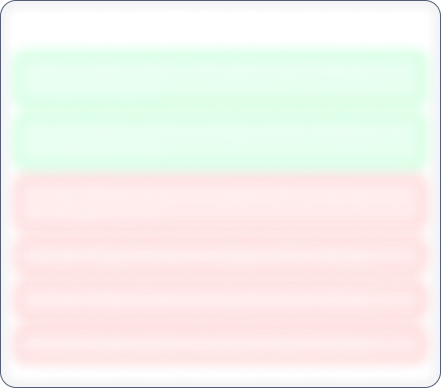Diwali Mega Sale 65% off
Kothari Industrial Corporation

No Data Available
Investor Sentiment
Kothari Industrial Corporation Share price and Fundamental Analysis
Key Metrics
Included In
Stock Returns
Stock Heatmap

No Stocks
Smart Score

Unlock Smart Score
See Detailed Analysis & Insights


Unlock Insights
See Detailed Analysis & Insights
Technicals
Returns Calculator
If you would have investedResearch Report
No Research Report
Corporate Action
Financials
Key Ratios
ROE
Avg ROE (3 Yrs) : NaN%
ROCE
Avg ROCE (3 Yrs) : NaN%
ROA
Avg ROA (3 Yrs) : NaN%
NPM
Avg NPM (3 Yrs) : NaN%
Dividend History
5 Year FactSheet
Documents

No Data Available
News
Kothari Industrial Corporation Management and History
Company Management


Unlock Management Data
See Detailed Analysis & Insights
Company History
The company was incorporated in 1970 as a public limited company under the name Kothari (Madras). Later, five companies -- Kothari Textiles, Adoni Spinning and Weaving Mills, Balamadies Plantations, Waterfall Estates, and Blue Mountains Estates and Industries --were amalgamated with it. In 1984, the name of the company was changed to Kothari Industrial Corporation (KICL). Pradip D Kothari is the Chairman and Managing Director of KICL. Subsidiary companies are Kothari Information Systems, Kothari Hotels and Kothari (Madras) International.
KICL is a well-diversified company with four divisions -- textiles, plantations, granite and fertilisers. In Nov.'92, it came out with a rights issue of 4.5 lac 16% PCDs of Rs 400 each, amounting to Rs 18 cr.The company increased its Spinning Capacity and also modernised the facilities at Singanallur and Vadamathurai plants.It had also set upa 100% EOU to manufacture 50,000 Sq mtr of granite tiles at Ennore near Chennai.These projects were partly funded by the issue made during 1992 to the tune of Rs.22.50 crores.
The proposed transfer of Kothari Textile - Mill No. 2 at Coimbatore to the wholly owned subsidiary of the company is being pursued and is expected to be completed in the current financial year
Kothari Industrial Corporation Share Price
Kothari Industrial Corporation share price reflects investor sentiment toward the company and is impacted by various factors such as financial performance, market trends, and economic conditions. Share price is an indicator which shows the current value of the company's shares at which buyers or sellers can transact.
Kothari Industrial Corporation Market Cap
Market capitalization of Kothari Industrial Corporation indicates the total value of its outstanding shares. Marketcap is calculated by multiplying share price and outstanding shares of the company. It is a helpful metric for assessing the company's size and market Valuation. It also helps investors understand how Kothari Industrial Corporation is valued compared to its competitors.
Kothari Industrial Corporation PE Ratio
Kothari Industrial Corporation PE ratio helps investors understand what is the market value of each stock compared to Kothari Industrial Corporation 's earnings. A PE ratio higher than the average industry PE could indicate an overvaluation of the stock, whereas a lower PE compared to the average industry PE could indicate an undervaluation.
Kothari Industrial Corporation PEG Ratio
The PEG ratio of Kothari Industrial Corporation evaluates its PE ratio in relation to its growth rate. A PEG ratio of 1 indicates a fair value, a PEG ratio of less than 1 indicates undervaluation, and a PEG ratio of more than 1 indicates overvaluation.
Kothari Industrial Corporation ROE (Return on Equity)
Return on Equity (ROE) measures how effectively Kothari Industrial Corporation generates profit from shareholders' equity. A higher ROE of more than 20% indicates better financial performance in terms of profitability.
Kothari Industrial Corporation ROCE (Return on Capital Employed)
Return on Capital Employed (ROCE) evaluates the profitability of Kothari Industrial Corporation in relation to its capital employed. In simple terms, ROCE provides insight to investors as to how well the company is utilizing the capital deployed. A high ROCE of more than 20% shows that the business is making profitable use of its capital.
Kothari Industrial Corporation Total Debt
Total debt of Kothari Industrial Corporation shows how much the company owes to either banks or individual creditors. In simple terms, this is the amount the company has to repay. Total debt can be a very useful metric to show the financial health of the company. Total debt more than equity is considered to be a bad sign.
Kothari Industrial Corporation Debt to Equity Ratio
The Debt-to-Equity (DE) ratio of Kothari Industrial Corporation compares its total debt to shareholders' equity. A higher Debt to Equity ratio could indicate higher financial risk, while a lower ratio suggests that the company is managing its debt efficiently.
Kothari Industrial Corporation CAGR (Compound Annual Growth Rate)
CAGR shows the consistent growth rate of Kothari Industrial Corporation over a specific period, whether it is over a month, a year, or 10 years. It is a key metric to evaluate the company’s long-term growth potential. Main metrics for which CAGR is calculated are net sales, net profit, operating profit, and stock returns.
Kothari Industrial Corporation Technical Analysis
Technical analysis of Kothari Industrial Corporation helps investors get an insight into when they can enter or exit the stock. Key components of Kothari Industrial Corporation Technical Analysis include:
Support Levels (S1, S2, S3)
There are usually multiple support levels, but the main support levels for a stock are S1, S2, S3. Support levels indicate price points where stock might get support from buyers, helping the stock stop falling and rise.
Resistance Levels (R1, R2, R3)
There are usually multiple resistance levels, but the main resistance levels for a stock are R1, R2, R3. Resistance levels represent price points where Kothari Industrial Corporation shares often struggle to rise above due to selling pressure.
Kothari Industrial Corporation Dividends
Dividends refer to the portion of the company’s profits distributed to its shareholders. Dividends are typically paid out in cash and reflect Kothari Industrial Corporation ’s financial health and profitability.
Kothari Industrial Corporation Bonus Shares
Bonus shares are usually given by companies to make the stock more affordable, increase liquidity, boost investor confidence, and more.
Kothari Industrial Corporation Stock Split
Stock split increases the number of its outstanding shares by dividing each existing share into multiple shares. When the company offers a stock split, the face value of the stock reduces in the same proportion as the split ratio.
Kothari Industrial Corporation Financials
The financials of Kothari Industrial Corporation provide a complete view to investors about its net sales, net profit, operating profits, expenses, and overall financial health. Investors can analyze financial data to assess the company’s stability and also understand how the company has been growing financially.
Kothari Industrial Corporation Profit and Loss Statements
The profit and loss statement of Kothari Industrial Corporation highlights its net sales, net profit, total expenditure, and operating profits in the current financial year. This Profit and Loss statement is crucial for evaluating the profitability and financial stability of Kothari Industrial Corporation .
Kothari Industrial Corporation Balance Sheet
The balance sheet presents a snapshot of Kothari Industrial Corporation ’s assets, liabilities, and equity of shareholders, providing insights into the financials of the company.
Kothari Industrial Corporation Cashflow Statements
Cashflow statements track the company's cash inflows and outflows over a period. It is an essential tool for understanding how well the company manages its liquidity and finances.


